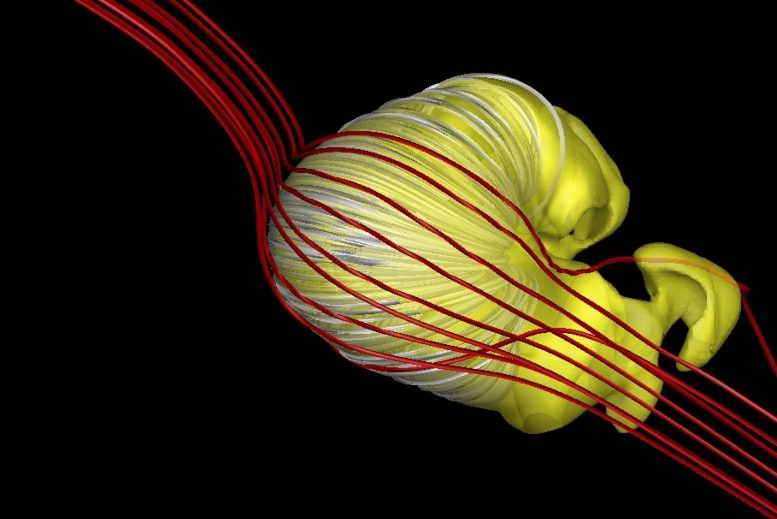A new space study was revealed by researchers at Boston University on Mar 16 that might change how space should be studied. According to them, most science experts calling the protective bubble surrounding the Sun 'heliosphere' are all wrong. This bubble is not sphere-shaped at all but shaped more like baked good croissant or crescent-- which must be called Helio-crescent.
Heliosphere debunked! Space experts reveal it's not sphere-shaped but more like a croissant

According to the research study made by Merav Opher, professor of astronomy and researcher at Boston University's Center for Space Physics, and her coauthor James Drake of the University of Maryland, there seemed to be wrong information that has been accepted by millions of researchers and people from years ago. This is when the first researchers identified the bubble-like surrounding the Sun and called it 'heliosphere.'
As explained by them, the shape of this bubble is not a sphere at all. Using their created image of the heliosphere, it was more like a croissant or a beach ball-shaped bubble.
For people out there still out of the blue on what is heliosphere, this is the vast space region that casts a magnetic "force field" around all the planets, deflecting charged particles that would otherwise muscle into the solar system and even tear through DNA. It was first thought to be sphere-shaped since the last five spacecraft returned with this data, including Pioneer 10, Pioneer 11, Voyager 1, and Voyager 2, and New Horizons launched in 2006.
According to Opher years ago, the bubble-like force field is shaped like a comet, with a round "nose" on one side and a long tail extending in the opposite direction. In 2015, the study was even made clearer when they used a new computer model and data from the Voyager 1 spacecraft. Using the info they acquired, they suggested using the "croissant" model and explained that this image shows how the two jets extend downstream from the nose rather than a single fade-away tail. "That started the conversation about the global structure of the heliosphere," says Opher.
"If we want to understand our environment, we'd better understand all the way through this heliosphere," says Loeb, Opher's collaborator from Harvard.
Experts: We can't accept Helio-crescent image and change space studies quickly
Though the findings of Opher and Drake seemed to be a great research study, some experts in the field said that they could not quickly accept these claims. Especially with how huge this information can affect all space travels and studies made and published years ago.
In fact, two years ago, another study somehow supports Opher and Drake's claims by saying that the bubble is not a sphere but neither a comet nor a croissant, but more like a beach ball. This is according to the readings from the Cassini spacecraft, which orbited Saturn from 2004 until 2017, that also debunked the original theory.
However, Tom Krimigis, who led experiments on both Cassini and Voyager, said that these theories could not be quickly accepted by the space studies.
"You don't accept that kind of change easily," said him. "The whole scientific community that works in this area had assumed for over 55 years that the heliosphere had a comet tail."
ALSO READ: NASA Solves Mystery Of Eerie Whistling Sound In Space
ⓒ 2025 TECHTIMES.com All rights reserved. Do not reproduce without permission.




